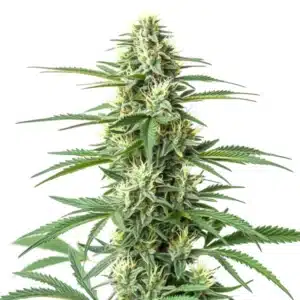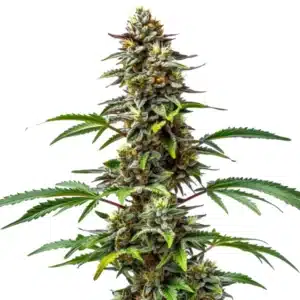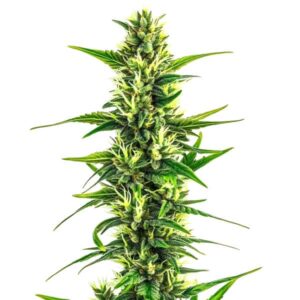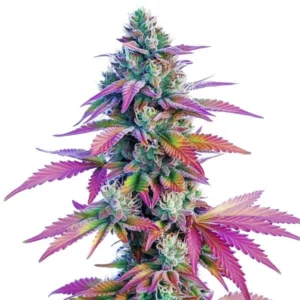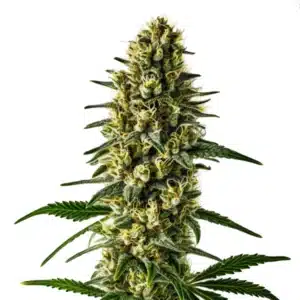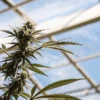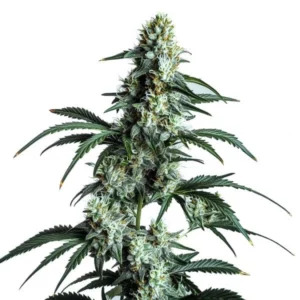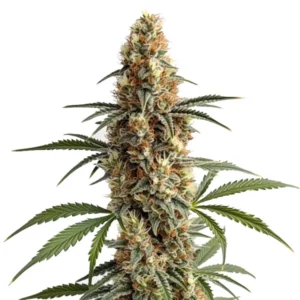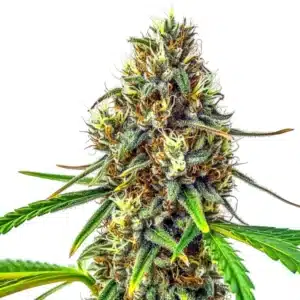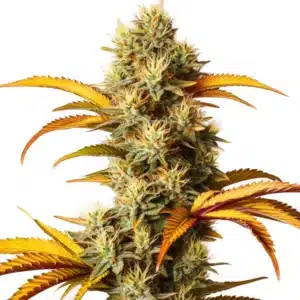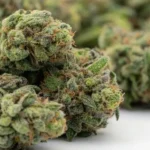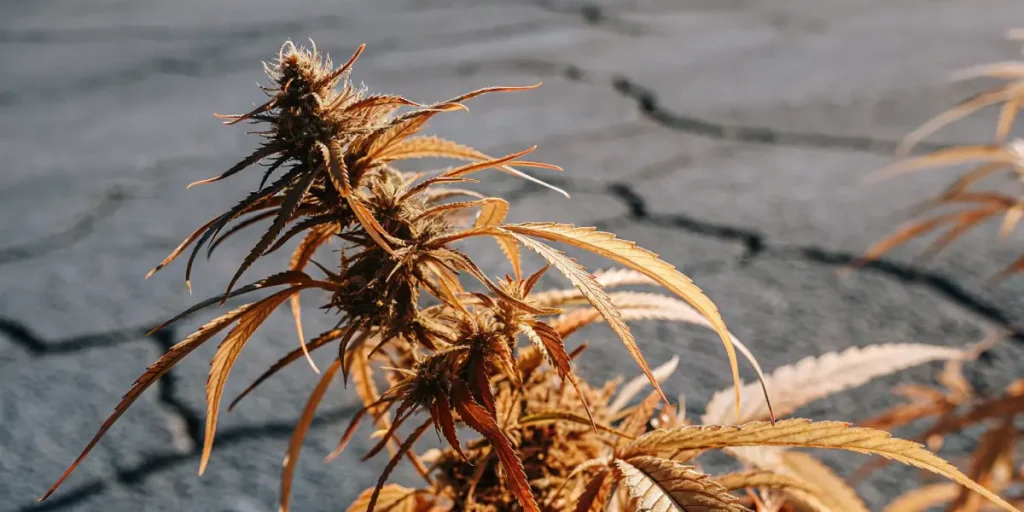
How Cannabis Responds to Environmental Stress
The journey of growing cannabis is a dance with nature. One moment it’s all sunshine and rainbows, the next, you’re dealing with unexpected challenges. How cannabis responds to environmental stress is a key factor in your success as a grower. Whether you’re a first-time cannabis seed buyer or a seasoned cultivator, knowing these stress responses can make or break your harvest.
Cannabis plants, like many others, face various environmental stressors. From droughts to nutrient deficiencies, these factors can significantly impact growth. But don’t worry, these plants have some clever tricks up their sleeves. Let’s dive into how they cope, adapt, and thrive even under pressure.
Recommended Strains
CBD Critical Mass (1:1)
-
CBD: 5%
-
THC: 5%
-
Type of seed: CBD Feminized
-
Phenotype: 40% Sativa / 60% Indica
-
Flavor: Citrus, Fruity, Woody
-
Day to flower: 8 - 10 weeks
Blue Dream
-
THC: 17% - 24%
-
Type of seed: Feminized
-
Phenotype: 50% Sativa / 50% Indica
-
Flavor: Berry, Blueberry, Mango, Sweet
-
Day to flower: 8 - 10 weeks
By grasping the basics of cannabis environmental stress response mechanisms, you can prepare for whatever Mother Nature throws your way. The insights can help you choose the right strains and apply effective cultivation techniques for a bountiful yield.
Effects of Drought Stress on Cannabis Growth
Drought stress is one of the most common challenges for cannabis growers. When water becomes scarce, your plants enter survival mode. They conserve what little they have to maintain essential functions. But if the drought continues, growth can slow or even halt.
In response, cannabis plants often reduce leaf size to minimize water loss. They might also close their stomata, the tiny pores on leaves, to prevent evaporation. While these strategies help in the short term, long-term drought stress can lead to stunted growth and reduced yields. It’s crucial to monitor soil moisture and water your plants consistently.
Knowing how cannabis responds to environmental stress, particularly drought, enables growers to adopt proactive measures. Implementing drip irrigation systems can provide consistent moisture, reducing the adverse effects of drought. Furthermore, choosing cannabis strains known for drought resistance can be a strategic advantage in regions prone to dry spells.
Another innovative approach is the use of water-retentive gels mixed into the soil. These gels absorb and slowly release water, ensuring that plants have access to moisture over extended periods. By integrating such techniques, growers can significantly mitigate the effects of drought stress on cannabis growth.
Real-Life Example: Responding to Drought Stress
Imagine you’re growing the popular strain CBD Critical Mass from Blimburn Seeds. This strain is known for its resilience, but even it needs adequate water. During a dry spell, you notice the leaves start curling inward. This is a signal that the plant is under stress.
By increasing your watering schedule, you can help the plant recover. However, be careful not to overwater, as this can lead to root rot. Use a soil moisture meter to find the right balance. With timely intervention, your CBD Critical Mass can bounce back and produce a generous harvest.
Besides to adjusting watering schedules, the use of mulch can provide a buffer against drought conditions. Mulching helps retain soil moisture and protects the roots from extreme temperature fluctuations, which can exacerbate stress.
Monitoring weather forecasts and preparing for dry spells by ensuring your water supply is ample can also be pivotal. Having a contingency plan for water shortages helps safeguard your plants against the unpredictable effects of drought stress, ensuring a steady growth cycle.
Promos & Deals
Cannabis Plant Adaptation to Temperature Fluctuations
Temperature changes are another environmental stressor for cannabis. Extreme heat or cold can interfere with growth, flowering, and overall plant health. Yet, cannabis plants are quite adaptable. They employ several strategies to cope with these fluctuations.
When temperatures soar, plants might increase their transpiration rate. This is similar to sweating in humans. It helps cool the plant but comes at the cost of increased water loss. Conversely, in cooler temperatures, growth can slow as metabolic processes decelerate to conserve energy.
How cannabis responds to environmental stress, particularly through temperature fluctuations, involves a complex interplay of physiological adaptations. For instance, some strains develop a waxy leaf coating that reduces transpiration and protects against heat stress.
On the flip side, during cold spells, cannabis plants may increase their production of certain proteins that act as antifreeze, protecting cellular structures. Knowing these cannabis environmental stress response mechanisms allows growers to select the best strains for their climate.
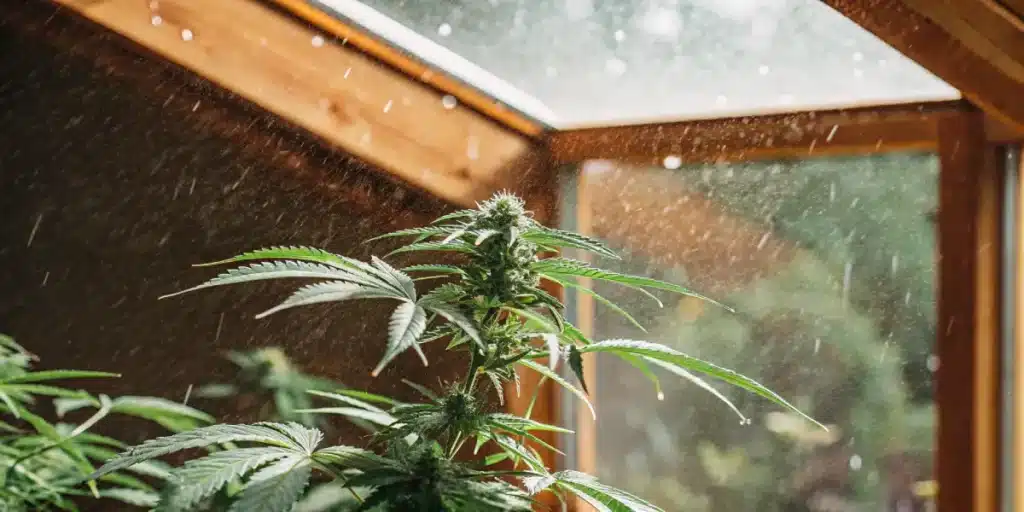
Managing Temperature Fluctuations for Optimal Growth
Let’s say you’re growing Blue Dream, a favorite among many cannabis enthusiasts. You notice a sudden drop in night temperatures. This could stress your plants if left unchecked.
Consider using a greenhouse or grow lights to maintain a stable temperature. These tools can provide the warmth your plants need during cooler periods. On hot days, shade cloths or proper ventilation can prevent overheating.
Insulating your growing area or using thermal blankets can also shield plants from abrupt temperature changes. These measures ensure that the internal environment remains conducive to growth, regardless of external conditions.
Furthermore, strategic plant placement, such as positioning them to receive morning sun, can mitigate temperature-related stress. By integrating these techniques, growers can ensure their cannabis plants maintain optimal growth rates despite environmental challenges.
Impact of Nutrient Deficiency on Cannabis Physiology
Nutrients are the building blocks of healthy cannabis plants. A lack of essential nutrients can cause physiological stress, affecting everything from leaf color to bud development. Each nutrient plays a specific role, and a deficiency can lead to visible symptoms.
For instance, a nitrogen deficiency might cause yellowing leaves, while a lack of potassium could result in weak stems. These signs are the plant’s way of signaling distress. By addressing them promptly, you can restore balance and health to your cannabis garden.
The impact of nutrient deficiency on cannabis physiology can be profound, affecting both the plant’s appearance and its biochemical processes. Deficiencies can impair photosynthesis, reduce energy production, and ultimately lead to decreased yields.
To prevent these issues, knowing how cannabis responds to environmental stress, including nutrient stress, is crucial. Implementing a regular feeding schedule and using soil amendments can enhance nutrient availability, supporting robust plant health.
Tackling Nutrient Deficiencies in Cannabis Cultivation
Suppose you’re cultivating Gelato, a strain celebrated for its rich flavor and potent effects. You notice the leaves are turning yellow, a classic sign of nitrogen deficiency.
In this case, a nitrogen-rich fertilizer can help. However, be cautious not to over-fertilize, as this can lead to nutrient burn. It’s all about finding the right balance. Regularly checking the pH of your soil or growing medium ensures nutrients are available for uptake.
Incorporating organic matter, such as compost or worm castings, into the soil can enhance nutrient retention and provide a slow-release source of essential elements. This approach not only addresses immediate deficiencies but also improves soil health over time.
Furthermore, conducting regular soil tests can help identify potential nutrient imbalances before they become problematic. By proactively managing nutrient inputs, growers can foster an environment where cannabis plants thrive and produce high-quality yields.
Cannabis Response to Light Stress Factors
Light is essential for photosynthesis, but too much or too little can stress cannabis plants. Insufficient light might lead to leggy growth, while excessive light can cause bleaching and burnt leaves. Finding the right balance is crucial for a successful harvest.
Cannabis plants have evolved to adapt to varying light conditions. In low light, they may stretch to reach more light, while in bright conditions, they might develop thicker leaves to protect against light stress. Adjusting your grow lights or plant positioning can help manage these factors.
Exploring how cannabis responds to environmental stress, particularly light stress, reveals a remarkable adaptability. Plants exposed to fluctuating light conditions often modify their chlorophyll concentration, optimizing their light absorption efficiency.
Moreover, the use of reflective surfaces can enhance light distribution, ensuring that lower branches receive adequate illumination. This not only prevents light stress but also maximizes the plant’s overall photosynthetic capacity, promoting vigorous growth.
Optimizing Light Conditions for Cannabis Growth
Consider a scenario where you’re growing indoors under artificial lights. Your Sour Diesel plants start showing signs of light burn, with leaves turning white at the tips.
To remedy this, you can raise the lights or reduce their intensity. This adjustment helps prevent further damage and allows your plants to recover. On the flip side, if plants appear stretched, consider increasing light exposure or lowering the lights.
Implementing a light rotation schedule, where plants are periodically repositioned, can ensure even light exposure across the canopy. This technique helps prevent localized stress and promotes uniform growth.
Additionally, tailoring the light spectrum to match each growth stage can significantly enhance plant development. Using full-spectrum LED lights, for instance, can simulate natural sunlight, providing cannabis plants with optimal conditions for photosynthesis and growth.
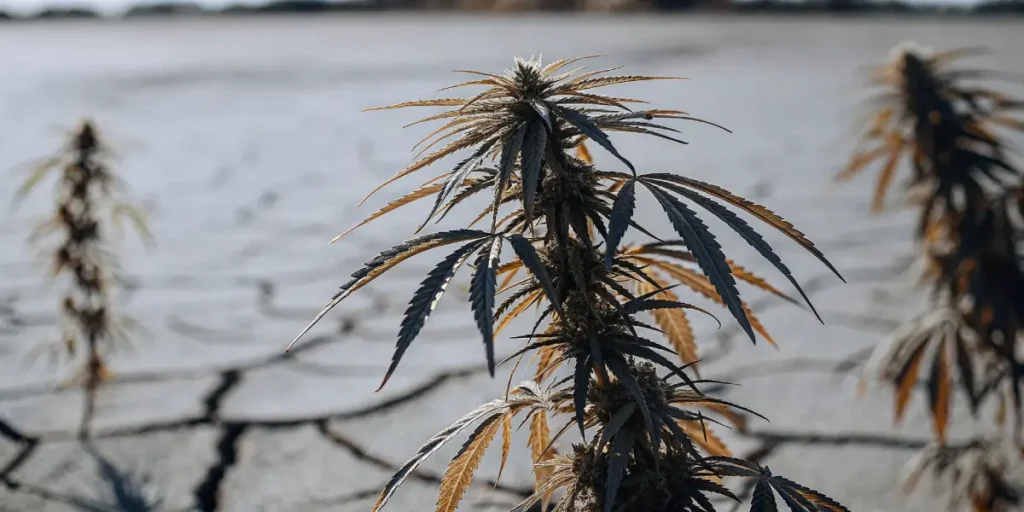
FAQs about How cannabis responds to environmental stress
How do cannabis plants cope with drought stress?
Cannabis plants employ several strategies to deal with drought stress. They may reduce leaf size and close stomata to conserve water. These changes help minimize water loss and allow the plant to survive short-term drought conditions. However, prolonged drought can hinder growth and reduce yield.
Monitoring soil moisture and providing consistent watering are essential to prevent drought stress. Using tools like soil moisture meters and implementing mulching can aid in maintaining optimal moisture levels. These practices ensure your plants remain healthy and productive.
Knowing the effects of drought stress on cannabis growth allows growers to anticipate potential challenges and implement preventive measures. By selecting drought-tolerant strains and employing water-efficient practices, you can significantly enhance your cultivation success.
Furthermore, integrating technology, such as automated irrigation systems, can optimize water usage and reduce labor. These systems can be programmed to deliver precise amounts of water, ensuring that plants receive adequate hydration without the risk of overwatering.
What happens to cannabis plants during temperature fluctuations?
Temperature fluctuations can affect cannabis growth and development. High temperatures increase transpiration rates, leading to water loss and potential stress. Conversely, low temperatures slow down metabolic processes, impacting growth and vitality.
To manage these fluctuations, growers can use greenhouses or grow lights for temperature control. These tools help maintain stable conditions, reducing stress and promoting healthy growth. Adjustments like these are crucial for optimizing plant health and yield.
Knowing cannabis plant adaptation to temperature fluctuations is vital for successful cultivation. Implementing climate control systems, such as heaters or fans, can mitigate temperature extremes, ensuring a stable growing environment year-round.
Additionally, choosing strains with genetic traits suited to your local climate can enhance resilience. Some strains have evolved to thrive in specific temperature ranges, making them ideal candidates for regions with variable weather patterns.
How does nutrient deficiency affect cannabis plants?
Nutrient deficiency can lead to various physiological issues in cannabis plants. Symptoms vary depending on the lacking nutrient, such as yellowing leaves from nitrogen deficiency or weak stems from potassium deficiency. Addressing these issues promptly is vital.
Providing a balanced nutrient solution and maintaining proper pH levels are effective strategies. Regular feeding and monitoring ensure plants receive the essential nutrients for optimal growth and development, preventing deficiencies and promoting robust health.
Exploring the impact of nutrient deficiency on cannabis physiology highlights the importance of a comprehensive nutrient management plan. By tailoring nutrient applications to each growth stage, growers can support vigorous development and maximize yield potential.
Moreover, incorporating organic fertilizers can boost soil fertility and microbial activity, enhancing nutrient availability. This approach not only corrects deficiencies but also contributes to a healthier, more sustainable growing environment.
What are the signs of light stress in cannabis plants?
Light stress can manifest as leggy growth from insufficient light or leaf bleaching from excessive light. Cannabis plants may also develop thicker leaves to protect against intense light exposure. Recognizing these signs is crucial for addressing light stress.
Adjusting light intensity, positioning, and spectrum can help manage light stress. Providing the right light conditions at each growth stage supports healthy development and maximizes yield. These adjustments are essential for thriving cannabis cultivation.
Knowing cannabis response to light stress factors enables growers to fine-tune their lighting setups. Techniques such as using dimmable lights or light movers can help distribute light evenly and prevent localized stress.
Furthermore, monitoring plant responses and adjusting the photoperiod can optimize growth. By aligning the light cycle with the plant’s natural rhythms, growers can stimulate robust flowering and increase overall productivity.
How do cannabis plants adapt to environmental stress?
Cannabis plants possess adaptive mechanisms to cope with environmental stress. They alter physiological processes, such as closing stomata during drought or increasing transpiration during heat. These adaptations help them survive challenging conditions.
By monitoring environmental factors and making necessary adjustments, growers can support these natural adaptations. Implementing preventive measures and timely interventions ensures cannabis plants thrive, even in the face of environmental stressors.
Exploring cannabis environmental stress response mechanisms reveals a complex system of survival strategies. Plants may produce stress-related hormones or secondary metabolites that enhance resilience and deter pests.
Additionally, fostering a diverse and balanced ecosystem in your grow space can bolster plant health. Companion planting, for example, can enhance biodiversity and create a supportive environment for cannabis to flourish despite environmental stress.

